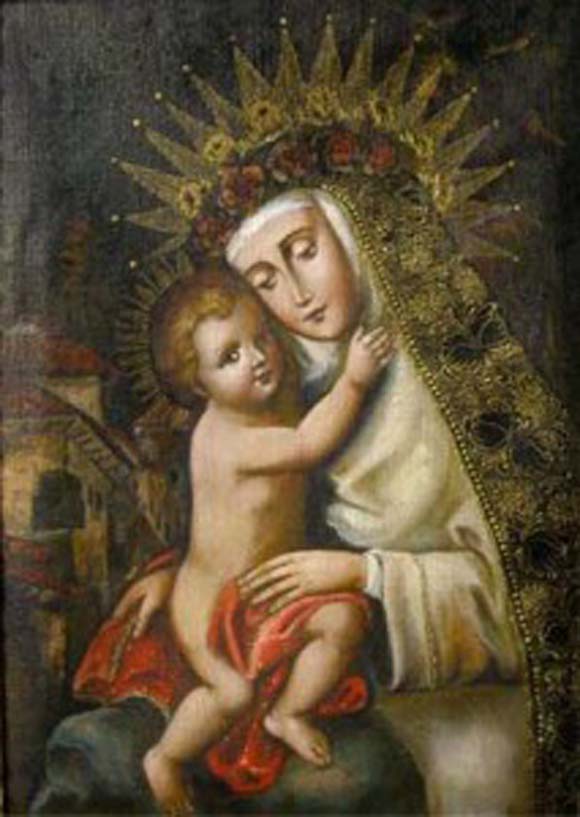
St. Rose of Lima
 St. Rose of Lima was born Isabel de Flores on April 20, 1586 in the city of Lima, Peru. One day, her mother and some friends were sitting around the sleeping babe when a rose was seen to hover in the air above her head and descend to kiss her cheek. Her mother was astonished and in her joy promised never again to call her by any name but “Rose”.
St. Rose of Lima was born Isabel de Flores on April 20, 1586 in the city of Lima, Peru. One day, her mother and some friends were sitting around the sleeping babe when a rose was seen to hover in the air above her head and descend to kiss her cheek. Her mother was astonished and in her joy promised never again to call her by any name but “Rose”.
When she was only six years old she began a life of mortification: fasting on bread and water alone on Mondays, Wednesdays and Fridays. When she made her first communion and received Our Lord, Rose beheld him in a vision who told her that he would from that day forward sustain her body as well as her soul on the bread of life.
When she reached marriageable age her parents, Gaspar and Maria were terribly distraught when she turned down an offer from a wealthy man as they thought that this would be the answer to the financial problems they had had for many years. They turned on her, bullying her with words and even hitting her in their anger. However, once they realised that her mind was made up they allowed her to follow her conscience.
Rose was not content with commonplace virtue, she knew that to become a saint one must be a man or woman of penance, a victim on the altar of sacrifice. Her only food by this point was the roughest crusts of bread to which she added bitter herbs from her garden. As an imitation of Christ she also daily rinsed her mouth with the gall of a sheep and formed a crown of thorns from some pliable metal which she spiked at various points. When she wore this crown she would cover it with roses from her garden so as to disguise her penance.
Rose considered becoming a cloistered nun but was dissuaded by a heavenly voice which rendered her immovable when she tried to leave the Dominican church. She then realised that she was to be a tertiary and went on to receive the habit, which she wore at all times as was the custom for tertiaries then. Rose felt that she lacked apostolic labours and so convinced her family to allow her some rooms in the house to which she invited poor Native American women who often lived in terrible poverty and were still unconverted. Here she would tend to their spiritual as well as their physical needs
Before her death she experienced the dark night of the soul where she felt terrible despair and was beset by demonic forces. Through this, however, she was guided by Our Lord, Our Lady, St. Catherine and her guardian angel. Rose was miraculously granted knowledge of the time of her death, having been made aware that she would not live to see her 32nd year. Her last words were: “Jesus, Jesus, be with me.” After her death there were innumerable cures and a great change for the better throughout Latin America. In 1671 she was proclaimed a saint by Pope Clement IX and made special advocate of the Western hemisphere. She was the first saint of the Americas and is patroness of the whole of the Americas, as well as the Philippines.
In our time the life of St. Rose is particularly instructive. She was a lay woman who demonstrated how one can live in the world and do a great deal of apostolic work and yet still remain deeply contemplative. In this respect her life embodies the balance of the Dominican vocation to be a contemplative who ventures out to preach and to save souls. Her penance teaches us not to be attached to worldy things and her love for the Blessed Sacrament shows us that it is only by the strength we receive from Christ through his Church that we can do any good in this world.


